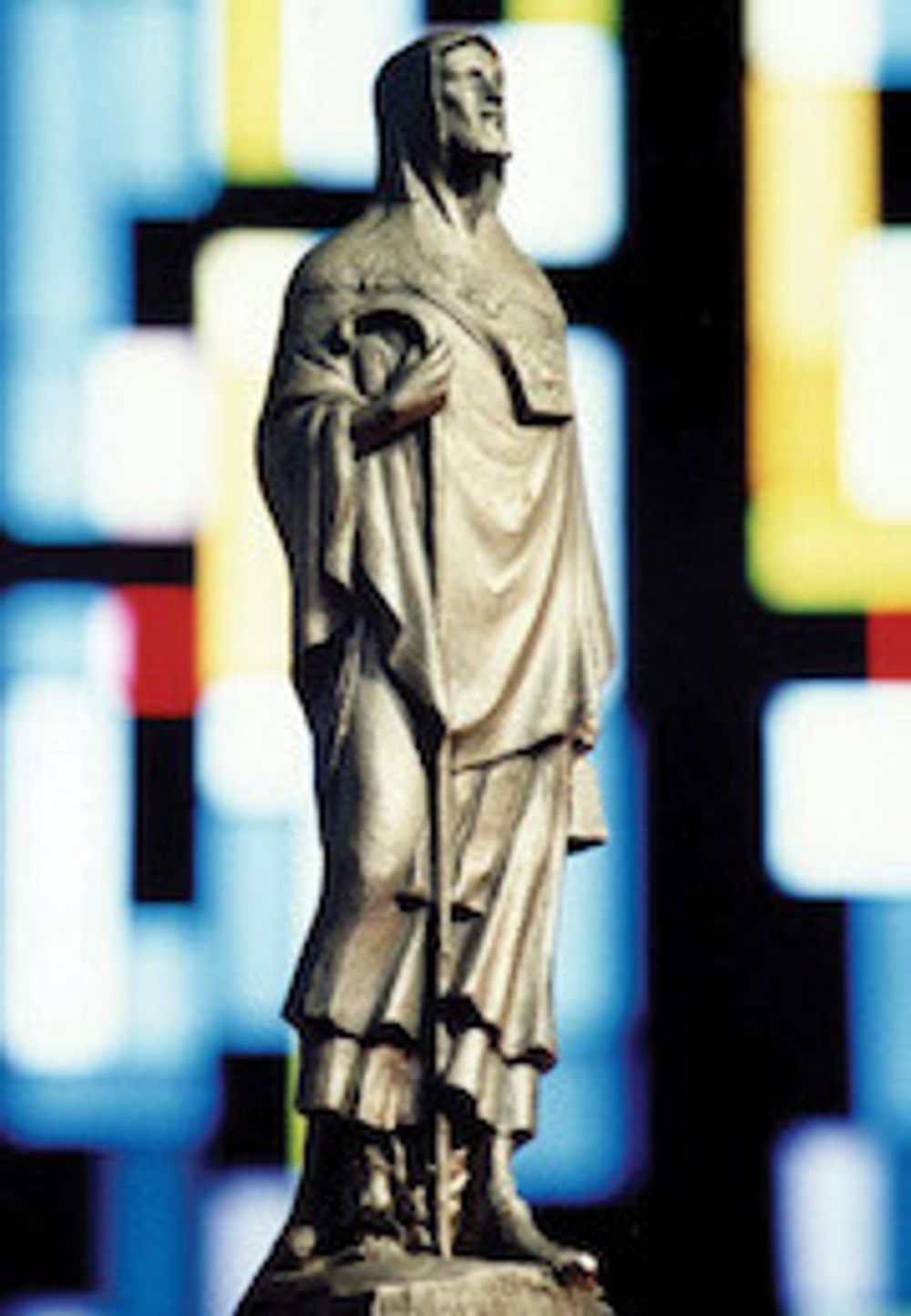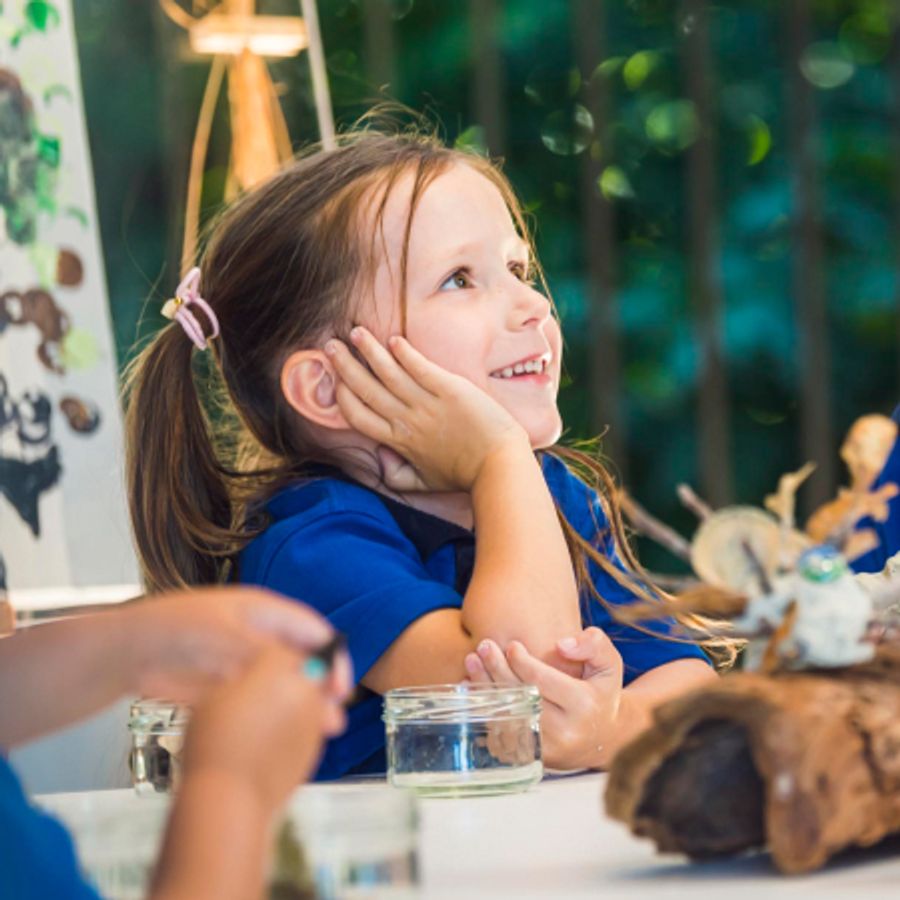Rooted in Faith
Saint Kentigern's history traces back to Reverend Adam MacFarlan, a remarkable Scottish minister. His exceptional skills in preaching, teaching, and public speaking left an indelible mark on countless students and their families. Fides Servanda Est – 'The faith must be kept' remains an anchor to this day, preserving our solid Christian values and rich Scottish heritage.
Our faith-based principles enable students to thrive in an environment of diverse cultural and family backgrounds nurtured by mutual respect and caring for one another.
On each of our campuses, our students come together for worship once a week, and every term, we invite our families to join their children in chapel services.
Combined with the lessons explored in Christian education classes and our institution-wide commitment to core values – Respect, Integrity, Service, Excellence, and Love – we lay the strong foundation for our students to grow into thoughtful, principled, and compassionate individuals.



Our Unique History
The inception of Saint Kentigern College in Pakuranga in 1953 was the realisation of a visionary dream held by a group of forward-thinking Presbyterian ministers and laymen.
They had founded the St Kentigern Trust in 1949 with a noble purpose: to establish a school for the education of boys. Taking the name of the patron saint of Glasgow, Saint Kentigern (fondly known as Mungo in Scotland), the College came to life. In 1954, Bruce House, a boarding facility for boys, opened its doors on the College campus.
In 2003, Saint Kentigern College embraced coeducation, welcoming girls into its fold. Parents quickly recognised the value of a Saint Kentigern education for both their sons and daughters, leading to substantial growth in female enrolment.
The stately Roselle House, located on Shore Road, Remuera, played a pivotal role in the history of Saint Kentigern Boys' School. Originally constructed in 1879 as a family residence for the Wilson family, who were part of the Wilson and Horton publishing family, it was later bequeathed to John Martyn Wilson, who entrusted it to the St Kentigern Trust for the sole purpose of educating boys.
In 1959, a boys' primary school was founded on Shore Road, initially enrolling 200 boys. The school swiftly gained a reputation for forging strong bonds with its students families, a legacy that endures to this day. As part of the 2012 'Saint Kentigern - One Organisation' review, Saint Kentigern School was renamed Saint Kentigern Boys' School. In May 2009, the Saint Kentigern Trust Board merged with the Trust Board of the former Corran School. This union led to Saint Kentigern taking on the responsibilities for staffing and operations at the school, which became known as Saint Kentigern School for Girls – Corran starting in 2010.
The traditions of both institutions, stemming from similar backgrounds, intertwined and grew stronger after the school formerly known as Corran became a part of the Saint Kentigern community. This integration prompted another name change in 2012, with the school being renamed Saint Kentigern Girls' School.
To offer families a comprehensive Saint Kentigern educational journey, we initiated the construction of a purpose-built Preschool on the Girls' School campus. By the beginning of the 2011 academic year, this Preschool was ready to welcome its first students. Its roll quickly reached capacity, and a waiting list formed, with families eager to provide their children with the benefits of a Saint Kentigern education. In March 2012, the Preschool received its formal inauguration, presided over by the Prime Minister, the Right Honourable John Key.
As part of the consolidation of the Preschool and Girls’ School onto Saint Kentigern’s Shore Road Campus, a new Girls' School and Preschool was designed and built. Her Excellency The Right Honourable Cindy Kiro, GNZM QSO, the Governor General of New Zealand, officially opened our new Preschool in March 2023.



Our Inspirational Early Saints
In the annals of history, our early saints were remarkable individuals who possessed unwavering faith in an unknown God. These extraordinary men dedicated their lives to spreading the word of God, ultimately reshaping the course of history. Saint Kentigern was one such luminary.
Saint Kentigern's journey began in the sixth century near Edinburgh, Scotland. Legend has it that he owed his existence to the British princess, Enoch (also known as Theneva). She faced rejection from her family and was set adrift on the Firth of Forth after becoming pregnant before marriage. The currents carried her across the waters until she landed near the present-day town of Culross, where the compassionate monks of St. Serf's monastery offered her refuge and care.
It was here that the infant Kentigern, also affectionately known as Saint Mungo, was born. Under the loving guidance of Serf, he received a monastic education and training. As he matured into a man, he ventured from the monastery into the west of Scotland. In time, he established his own religious foundation on the grounds where the majestic Glasgow Cathedral now stands. There, he dedicated himself to the conversion of the local population to Christianity.
In a later life, Kentigern embarked on a journey southward into England, leaving behind parishes that bear his name to this day. Legends suggest he ventured into North Wales, spending several years there before returning to Scotland, where he eventually passed away around 603 AD.
Upon his death, Saint Kentigern was revered as the patron saint of Glasgow. In his honour, the magnificent Glasgow Cathedral was erected. Even today, the emblem of the City of Glasgow is adorned with his figure and symbols associated with his extraordinary life.

The attributes of Saint Kentigern, or his beloved nickname "Mungo," are enshrined in a whimsical rhyme that has been passed down to generations of Glasgow school children and speaks to the city's Coat of Arms:
This is the bird that never flew
This is the tree that never grew
This is the bell that never rang
This is the fish that never swam
The Bird commemorates St. Serf's pet robin, accidentally killed by fellow monks who wrongly accused Kentigern. With faith, Kentigern held the lifeless bird and offered his prayers, miraculously breathing life back into it.
The Tree embodies another episode from Kentigern's youth when he was entrusted with maintaining the holy fire in St. Serf's monastery. In a momentary lapse, he fell asleep, and the sacred flame was extinguished. Nevertheless, Kentigern resourcefully broke frozen hazel branches and, through a divine miracle, rekindled the sacred fire.
The Bell, a symbol of Kentigern's ministry, is believed to have been bestowed upon him by the Pope. The original bell, tolled at funerals, has been replaced, but the bell of 1641, with its own storied history, is preserved in the People's Palace.
The Fish, Kentigern's catch from the waters of the Clyde, held an astonishing secret. When the fish was sliced open, a ring that belonged to the Queen of Cadzow was found inside it, miraculously restored to her. The Queen had been under suspicion for loosing the ring, but she implored Kentigern for help, and he answered her plea by this remarkable discovery.

The Prayer of Saint Kentigern
O Lord Jesus Christ,
who didst give such grace to Thy servant Saint Kentigern,
that he readily obeyed Thy Call,
and brought light to them that sat in darkness,
and the knowledge of truth to those who were in ignorance and fear;
so inspire us also that we may follow Thee gladly,
and hating all that is cruel and evil and wrong,
may ever strive to banish these things from our land.
Through Jesus Christ, our Lord,
Amen.
Our Chapels
The Chapels of Saint Kentigern stands as a revered centrepiece of our two campuses—a sacred space where the Saint Kentigern community gathers to explore the Christian values underpinning each School's essence. While Saint Kentigern maintains its ties to the Presbyterian Church, we have always embraced the diversity of our families, who represent a rich tapestry of denominations and faiths.
Our Chaplains deliver sermons each week, guiding our students at our College, Boys’ and Girls’ Schools on their spiritual journey. We invite our families once every term to join us for a Sunday evening Chapel Service, creating moments of spiritual connection.
Our campuses express the Saint Kentigern motto, 'Fides Servanda Est', a challenge for us to keep the faith. It urges us to inspire our students to know God and to extend their love and service to others within and beyond our school community. Through a dynamic Service program, we encourage our students to engage and lend a hand both locally and in the broader world.








